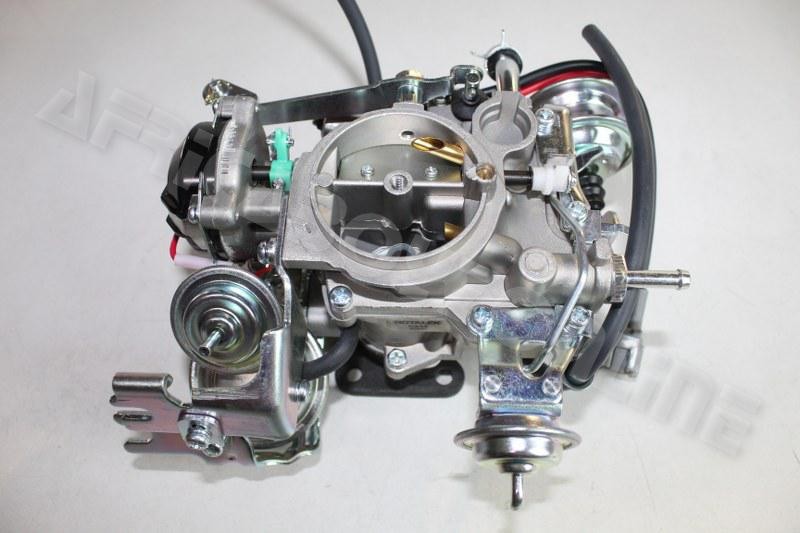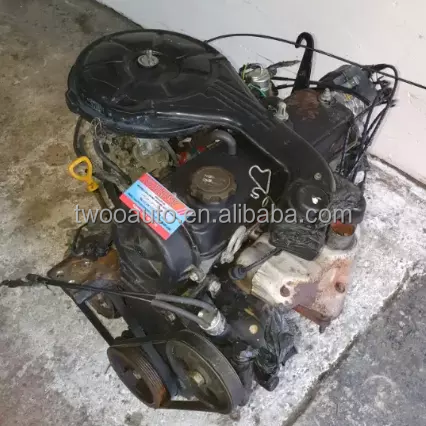Toyota Tazz: The Perfect Combination of Efficiency and Style in a Compact Car
Toyota Tazz: The Perfect Combination of Efficiency and Style in a Compact Car
Blog Article
Discover the most up to date Patterns in Engine Modern Technology Through Tazz
In the rapidly advancing landscape of automotive technology, Tazz stands at the center, highlighting considerable improvements in engine systems that prioritize both innovation and sustainability. From crossbreed engines that enhance fuel performance to the introduction of hydrogen fuel cells, the trends forming contemporary powertrains are not only boosting performance but additionally dealing with crucial ecological difficulties.
Hybrid Engine Innovations
Crossbreed engine developments stand for an essential shift in vehicle innovation, combining the advantages of internal burning engines with electric propulsion systems. This assimilation not only boosts fuel performance but additionally decreases emissions, conference increasingly rigid environmental guidelines. By utilizing both power resources, hybrid engines can enhance efficiency, delivering power when required while conserving fuel throughout less demanding motoring conditions.
Recent innovations in hybrid innovation include improvements in battery performance and regenerative braking systems. These innovations permit better energy healing throughout deceleration, which can be rerouted to assist in velocity or power accessory systems. Moreover, producers are focusing on portable styles and light-weight products to make best use of the performance of hybrid powertrains.
The advancement of plug-in hybrids has also broadened the market, allowing vehicle drivers to bill their vehicles using basic electric outlets. This function often enables for considerable all-electric variety, additional reducing reliance on conventional fuels. tazz. As the automobile market remains to progress, hybrid engine modern technologies are anticipated to play a critical duty in linking the void in between traditional automobiles and completely electrical designs, offering a transitional service that deals with diverse customer requirements and preferences
Advancements in Electric Powertrains
The automobile landscape is quickly developing, with electric powertrains becoming a leading pressure in sustainable transportation. Advances in electrical automobile (EV) innovation are considerably enhancing performance, customer, and effectiveness experience. Key innovations consist of improvements in battery chemistry, which have enhanced energy thickness, lowered billing times, and prolonged general battery life.
Solid-state batteries, as an example, promise to change the marketplace by providing better safety and efficiency compared to standard lithium-ion cells. Developments in regenerative stopping systems are enabling cars to recuperate power during slowdown, contributing to general performance.
Along with battery modern technology, electric motor designs are ending up being more advanced. Technologies such as integrated motors and progressed thermal monitoring systems are aiding to optimize power shipment and minimize weight, inevitably enhancing car characteristics.

Collectively, these advances emphasize the commitment to transition towards cleaner, more effective transport solutions, placing electric powertrains at the center of automobile technology.
The Rise of Hydrogen Fuel Cells
Significantly, hydrogen fuel cells are acquiring traction as a sensible choice to standard interior combustion engines and battery electric lorries. This modern technology takes advantage of the chemical power stored in hydrogen, transforming it into power via an electrochemical response with oxygen. The main byproduct of this procedure is water, making hydrogen gas cells an environmentally friendly choice with absolutely no emissions at the tailpipe.

Car manufacturers are significantly buying hydrogen fuel cell innovation, identifying its possibility for long-range applications and rapid refueling capabilities that equal standard gas. Additionally, sectors such as durable transport and public transit are especially appropriate for hydrogen gas cells, where battery electrical remedies might fail because of weight and range limitations.
As research and investment remain to expand, hydrogen fuel cells are poised to play a significant role in the future landscape this hyperlink of clean transport and power remedies.
Enhancements in Internal Burning Engines
Technologies in inner burning engine (ICE) modern technology are changing standard automobiles to satisfy contemporary environmental standards and performance assumptions. Among one of the most considerable enhancements involves the assimilation of innovative gas injection systems. These systems optimize the air-fuel mixture, improving burning effectiveness and leading to decreased emissions. Straight fuel shot, for instance, permits better atomization of fuel, leading to even more full combustion and enhanced power result.
In addition, turbocharging has obtained importance, allowing smaller sized engines to deliver greater efficiency without the weight of larger engines - tazz. This innovation not only boosts effectiveness but likewise contributes to reduce gas usage. Variable shutoff timing systems are additionally being fine-tuned, enabling engines to adjust to various driving conditions for boosted torque and responsiveness
Additionally, making use of lightweight products in engine construction is coming to be basic, more enhancing fuel performance by decreasing total vehicle weight. Engine control systems (ECUs) are significantly sophisticated, allowing real-time changes that optimize performance and discharges.
These improvements collectively represent an essential shift in ICE technology, lining up with international sustainability objectives while still supplying the performance motorists get out of their automobiles. As the market evolves, these improvements continue to shape the future of conventional vehicle design.
Future Fads in Engine Efficiency
Considerable developments in engine effectiveness are anticipated as makers concentrate dig this on integrating advanced technologies to meet rigorous environmental regulations and customer demands. The change in the direction of electrification, hybrid systems, and alternative gas is improving the automobile landscape, driving advancements that enhance fuel economic climate and decrease emissions.
Among the key fads is the application of sophisticated products and manufacturing methods. Lightweight compounds and high-strength alloys add to minimized car weight, hence boosting total performance. Furthermore, the fostering of turbocharging and variable shutoff timing modern technologies permits boosted power result from smaller engines, further enhancing gas economy.

Conclusion
In final thought, the expedition of engine modern technology reveals substantial improvements that focus on sustainability and efficiency. Innovations in hybrid engine systems, electric powertrains, and hydrogen gas cells demonstrate a dedication to minimizing discharges while improving performance. Improvements in interior combustion engines and a focus on lightweight materials contribute click here for info to general engine effectiveness. As the auto market continues to develop, these patterns will certainly play a critical role fit a cleaner and more lasting future for transport.
From crossbreed engines that maximize gas performance to the emergence of hydrogen fuel cells, the trends forming contemporary powertrains are not just improving efficiency however likewise resolving critical environmental challenges.Hybrid engine innovations represent a pivotal change in auto modern technology, incorporating the advantages of internal combustion engines with electric propulsion systems.In addition, turbocharging has actually obtained prestige, enabling smaller engines to deliver higher efficiency without the weight of bigger engines. Furthermore, the adoption of turbocharging and variable valve timing technologies permits for enhanced power result from smaller sized engines, further enhancing gas economic climate.
Enhancements in internal burning engines and an emphasis on lightweight products add to general engine efficiency.
Report this page